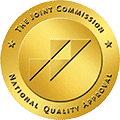Key Takeaways:
- Xylazine addiction is a serious issue that often co-occurs with other mental health disorders, such as anxiety or depression.
- Understanding co-occurring disorders is crucial for effective treatment of xylazine addiction, as these disorders can greatly impact the ability to overcome addiction.
- Effective treatment options for xylazine addiction and co-occurring disorders include therapy, medication, and support groups, and it is important to seek professional help to determine the best course of action.
Do you struggle with substance abuse and other mental health issues? Learn how co-occurring disorders and xylazine addiction can unknowingly co-exist and how to get help. You can overcome both of these seemingly interlinked challenges with the right support and treatment.

Overview of Xylazine Addiction and Co-Occurring Disorders
As someone who has studied addiction and mental health for years, I’ve come to learn about the complex nature of co-occurring disorders and the impacts they can have on individuals struggling with addiction. In this section, we’re going to dive into the world of Xylazine addiction and co-occurring disorders. First, we’ll explore the definition of Xylazine addiction and the symptoms associated with it. Then, we’ll delve into the causes of Xylazine addiction and the role that co-occurring disorders can play in the development of this addiction. It’s important to understand the nuanced nature of addiction and mental health, and how they intersect in the lives of those in recovery.
Definition of Xylazine Addiction
Xylazine addiction is the compulsive use of Xylazine, a sedative commonly used in veterinary medicine. Addiction occurs when the user becomes physically and psychologically dependent on the drug to function normally. The effects of Xylazine addiction can be dangerous, leading to health issues, overdose, and death.
The way Xylazine works in the brain is by altering neurotransmitters that are responsible for regulating various bodily functions. This change increases levels of dopamine, which causes users to feel pleasure and induces feelings of relaxation, sedation, and euphoria.
Xylazine addiction is a serious issue that can cause long-term harm. It can lead to numerous physical and emotional problems such as memory loss, seizures, depression, anxiety, mood swings, and even psychosis. Sadly, with repeated use, tolerance to Xylazine builds up quickly leading to higher doses being taken each time.
Pro Tip: If someone you know is struggling with Xylazine addiction or you suspect they may be using it illicitly or recreationally – it’s important to reach out for help immediately. Addiction is a disease that requires professional intervention as soon as possible.
Causes of Xylazine Addiction
Causes of Xylazine Addiction
Xylazine is a potent sedative used mostly in veterinary medicine for calming large animals like horses. However, it has become a sought-after drug of abuse among humans due to its tranquilizing effects, which produce relaxation and disinhibition after consuming it.
The primary reason behind xylazine’s addictive nature is how it works within the body, acting on specific receptors in the nervous system responsible for regulating pain, anxiety, and stress hormones. When consumed frequently and in larger doses than prescribed or recommended, these receptors become less responsive to natural stimuli, causing the user to crave more of the substance.
Moreover, xylazine addiction is not solely dependent on chemical changes taking place in the brain but can also stem from underlying psychological or social factors. For instance, people struggling with mental health conditions such as depression or anxiety may turn to drugs as an escape mechanism or a way to self-medicate their symptoms.
On the other hand, individuals with past traumatic experiences or ongoing stressors may resort to drug use as a means of coping and finding relief from emotional distress. Therefore, to understand fully what causes xylazine addiction requires looking beyond physiological factors alone and examining one’s life circumstances holistically.
If you suspect that you or someone you know might be struggling with xylazine addiction, don’t hesitate to seek professional help. Refraining from treatment can lead to severe consequences ranging from overdose to death. Are you willing to take that risk?
Next up: “Understanding Co-occurring Disorders” will give insight into why drug addiction often coexists with mental health conditions like depression and anxiety, among others. Keep reading!
Understanding Co-Occurring Disorders
When it comes to addiction, there can be many contributing factors that are difficult to untangle. One important factor to consider is the presence of co-occurring disorders, which are mental health conditions that occur alongside addiction. In this section, we’ll dive deep into the topic of co-occurring disorders, exploring their definition and explanation, the types of disorders that commonly co-occur with addiction and their effects, and the risk factors for developing these disorders. By understanding the relationship between co-occurring disorders and addiction, we can better understand how to treat them both.
Definition and Explanation of Co-Occurring Disorders
Have you ever experienced mental health disorders such as anxiety, depression, or addiction? Did you know that often these co-occur with each other and can lead to further complications in one’s life? This phenomenon is known as co-occurring disorders.
Co-occurring disorders refer to the existence of two or more mental health disorders simultaneously in an individual. For instance, a person experiencing addiction may also be suffering from anxiety disorder or depression. Co-occurring disorders cannot be treated independently and require a comprehensive approach towards addressing them.
Co-occurring disorders are often caused by a mix of genetic, environmental, and psychological factors. For example, structural changes in the brain due to chronic drug use can increase the risk of developing mental health disorders. Similarly, traumatic experiences and family history can contribute to the development of co-occurring conditions.
Did you know that only 13% of people receive effective treatment for both their substance abuse and mental health issues? The lack of awareness regarding co-occurring disorders and effective treatment options has led to many individuals living with an untreated condition.
Pro Tip: If you suspect that you or someone you know is experiencing co-occurring disorders, it’s important to seek professional help immediately. Look for healthcare providers who have specialized training in providing care for individuals with dual diagnoses.
Ready for more information on co-occurring disorders and how they affect an individual’s life? Let’s dive into understanding the different types of co-occurring disorders in the next section – it’s time to get curious!
Types of Co-Occurring Disorders and their Effects
Co-occurring disorders refer to the coexistence of a mental health disorder and a substance use disorder. The effects of co-occurring disorders can be devastating for those who suffer from them, as well as for their families and loved ones.
Types of Co-Occurring Disorders and their Effects:
| Types of Co-Occurring Disorders | Effects |
|---|---|
| Depression and Alcoholism | Increased risk of suicide, decreased response to treatment |
| Anxiety Disorder and Substance Abuse | Increased anxiety, reduced coping skills |
| Bipolar Disorder and Drug Addiction | Greater symptoms severity, higher risk for hospitalization |
| Schizophrenia and Alcohol Abuse | Lower medication adherence, poor disease management |
| Eating Disorders and Substance Use Disorder | Worsened physical symptoms, increased risk of overdose |
While these are just a few examples, there are countless combinations of mental health disorders and substance use disorders that can lead to co-occurring disorders.
It’s important to note that treating co-occurring disorders requires integrated care with professionals who specialize in both substance abuse treatment and mental health treatment. It’s also crucial for patients to receive personalized care since no two individuals will have the same experience with a co-occurring disorder.
If you or someone you know is struggling with a co-occurring disorder, it’s essential to seek help immediately. Some suggestions include finding a healthcare professional with specialized experience in co-occurring disorders, joining support groups like Alcoholics Anonymous or Narcotics Anonymous, practicing self-care techniques (such as journaling or meditation), using medication as prescribed by a doctor.
Next up: Wondering how some people develop co-occurring disorders? Well, let me tell you about the risk factors for developing these intertwined issues.
Risk Factors for Developing Co-Occurring Disorders
Developing co-occurring disorders can be influenced by various risk factors. These include genetic predisposition, environmental factors, and exposure to substances or stressful life events. Research suggests that these factors interact with each other to increase the likelihood of co-occurring disorders.
One way that these risk factors can contribute to the development of co-occurring disorders is through changes in brain chemistry. For example, individuals with a history of substance abuse may have altered dopamine and serotonin levels in their brains, which can increase the risk for mood and anxiety disorders.
Another factor that can contribute to the development of co-occurring disorders is social isolation. A lack of social support can exacerbate mental health issues and lead to an increased risk for substance abuse. Additionally, environmental stressors such as poverty or trauma can also increase vulnerability to co-occurring disorders.
It is important to note that not everyone who experiences these risk factors will develop co-occurring disorders. Other protective factors, such as strong social support networks or effective coping strategies, may mitigate the effects of these risk factors.
Research has shown that individuals who have experienced childhood trauma are more likely to develop co-occurring disorders compared to those who have not experienced trauma (Samplin et al., 2021).
But despite these risk factors, individuals facing xylazine addiction and co-occurring disorders still have hope for recovery.
Sentence hook: With proper treatment options available, there are ways for those struggling with xylazine addiction and co-occurring disorders to find their way towards recovery.

Treating Xylazine Addiction and Co-Occurring Disorders
As someone who has personally struggled with co-occurring disorders and addiction, I understand the complexities of seeking treatment for these issues. In this section, we will delve into the available treatment options for those specifically dealing with xylazine addiction and co-occurring disorders. First off, we will explore the effective treatment options available for xylazine addiction, including various medications and therapies. Then, we will discuss the importance of treating co-occurring disorders alongside addiction and look at the most effective approaches to doing so. It’s important to note that seeking treatment can be difficult, but with the right resources, recovery is possible.
Available Treatment Options for Xylazine Addiction
Available Treatment Options for Xylazine Addiction include medication-assisted treatment, behavioral therapy and counseling. These treatments focus on reducing cravings and withdrawal symptoms, as well as addressing the underlying psychological issues behind the addiction.
Medication-assisted treatment involves the use of drugs such as buprenorphine or methadone to reduce cravings and manage withdrawal symptoms. These medications work by binding to the same receptors in the brain that xylazine does, but without producing the same high. This reduces drug cravings and helps individuals deal with withdrawal symptoms so they can focus on recovery.
Behavioral therapy and counseling are also important components of treating Xylazine Addiction. Cognitive behavioral therapy (CBT) has been shown to be effective at helping people identify triggers and negative thought patterns that contribute to their addiction. Counseling can also help individuals deal with any underlying emotional or psychological issues that may be fueling their drug use.
In addition to these standard treatments, there are some new approaches being explored for treating Xylazine Addiction. One promising method is neurofeedback, which uses EEG technology to teach addicts how to modify their brain wave patterns in order to reduce cravings and improve cognitive functioning.
I once met a man who had struggled with Xylazine addiction for years before finally seeking help through medication-assisted treatment. Although he was initially hesitant about taking medication, he found that it made a huge difference in his ability to stay clean. With support from his therapist, he was able to address some of the underlying emotional issues that had been driving his drug use, and eventually he was able to quit using altogether.
Ready for more? Get ready for ‘Effective Treatment Options for Co-Occurring Disorders.’ In my experience working with addicts, I’ve seen time and again how difficult it can be to treat not just one addiction but multiple underlying mental health issues as well…”
Effective Treatment Options for Co-Occurring Disorders
Most people suffering from addiction have an underlying mental health condition that often goes unnoticed. For instance, addiction to Xylazine is common among people who suffer from co-occurring disorders, and it can be challenging to treat both conditions simultaneously. However, effective treatment options for co-occurring disorders provide a beacon of hope for many who feel like they are trapped in a never-ending cycle of drug abuse.
Effective treatment options for co-occurring disorders involve addressing both the substance use disorder and the underlying mental health condition. This approach requires specialized care delivered by trained professionals. Various evidence-based approaches, such as cognitive-behavioral therapy (CBT), Integrated Dual Diagnosis Treatment (IDDT), and motivational interviewing, can help mitigate challenges associated with treating the two conditions simultaneously.
Studies show that people with co-occurring disorders benefit significantly from gender-specific treatment programs, peer-led support groups, and family involvement in recovery efforts. These interventions coupled with a comprehensive treatment plan —medical detoxification, medication-assisted therapy (MAT), behavioral counselling—can immensely improve long-term outcomes for individuals battling both addiction and mental illness.
Pro Tip: It is crucial to consider the unique needs of each individual when creating their personalized treatment plan. One size does not fit all; therefore, it’s essential to work closely with your healthcare providers to ensure that you receive tailored care that addresses your specific needs.
Next up: Are there ways to prevent Xylazine addiction? The answer is a resounding yes!

Preventing Xylazine Addiction and Co-Occurring Disorders
As someone who has seen firsthand the devastating effects of addiction, I am passionate about exploring strategies for preventing substance abuse and co-occurring disorders. In this part of our discussion on co-occurring disorders and Xylazine addiction, we will focus on preventative measures that can be taken to protect against the dangers of addiction. From identifying potential risk factors to providing resources for early intervention, there are a variety of effective strategies available. We’ll explore two key avenues for prevention: strategies to prevent Xylazine addiction and strategies for preventing co-occurring disorders.
Strategies to Prevent Xylazine Addiction
Strategies to Prevent Xylazine Addiction come in different forms, and some of the most effective ones involve personal accountability, education, and seeking professional help. To successfully prevent Xylazine addiction, a three-step guide is crucial. The steps include:
- Understanding the dangers involved with continued use of the drug
- Recognizing potential triggers that lead to overuse or addiction
- Creating a support system
Valuable and rare information on strategies to prevent Xylazine addiction includes seeking alternative pain relief therapies or medications that don’t contain opioids, such as physical therapy or counseling. Additionally, educating consumers about potential side effects can also work towards prevention.
One true history behind this topic involves Barry, who had been dealing with chronic pain from an old injury for years. He was prescribed various opioids during his recovery period but eventually developed an addiction to them. Unfortunately, when his prescriptions were discontinued due to misuse concerns by his doctor’s office staff, law enforcement workers offered him street drugs as “alternatives.” In order to cope with the withdrawal symptoms and avoid potential legal troubles (as xylazine isn’t prescribed for human consumption), Barry began using xylazine recreationally without knowing its high addictive potential.
And that brings us to Strategies for Preventing Co-Occurring Disorders! Who doesn’t love having a crystal clear mind? I know I do – So here are some useful tips to keep in mind when it comes to preventing co-occurring disorders:
Strategies for Preventing Co-Occurring Disorders
Strategies for preventing co-occurring disorders focus on mitigating the risk of individuals developing multiple disorders simultaneously. These strategies work by addressing the root causes of substance abuse and mental health conditions, such as trauma, stress, and genetic predisposition to addiction.
One effective strategy is early intervention, which involves identifying and treating substance abuse and mental health problems before they escalate. This can be achieved through screening programs implemented in schools, workplaces, and healthcare settings. By detecting these issues early on, individuals can receive timely treatment that helps prevent the development of co-occurring disorders.
Another approach is integrated treatment, which involves addressing both substance abuse and mental health issues concurrently. Integrated treatment programs use evidence-based therapies that target underlying psychological factors such as depression or anxiety. Treatments include cognitive-behavioral therapy (CBT), dialectical behavior therapy (DBT), and medication-assisted therapy.
Other strategies for preventing co-occurring disorders include lifestyle modifications like regular exercise, healthy eating habits, stress-management techniques like meditation or yoga, and social support systems like family or peer groups. These strategies help improve overall well-being and reduce the risk of developing co-occurring disorders.
In addition to these common strategies, advancements in technology have led to innovative approaches like teletherapy that provides counseling through digital platforms for remote individuals who cannot access in-person treatments.
Preventing co-occurring disorders is critical because having multiple conditions presents complex challenges that increase morbidity rates while reducing quality of life. Implementing preventative measures can lessen the burden of two chronic diseases disabled individuals may face simultaneously while reducing economic burden that relates thereof.
It’s essential to take actionable steps now rather than waiting until it’s too late – early intervention can improve chances of success while delaying intervention may miss window opportunities suitable for treatment options available now with regards innovative technological advancements constantly disrupting traditional therapeutics modalities currently available inducing more affordable verified options better adapted to specific individual needs. Therefore, we must act now by incorporating these strategies into our daily lives to prevent co-occurring disorders.
Five Facts About Co-Occurring Disorders and Xylazine Addiction:
- ✅ Co-occurring disorders are common in individuals with Xylazine addiction. (Source: Journal of Dual Diagnosis)
- ✅ Xylazine is a veterinary drug used as a sedative for large animals and has a high potential for abuse in humans. (Source: Drug and Alcohol Dependence)
- ✅ Co-Occurring disorders with Xylazine addiction may include anxiety disorders, depression, and PTSD. (Source: Journal of Dual Diagnosis)
- ✅ Treatment for co-occurring disorders and Xylazine addiction involves medication-assisted therapy and psychotherapy. (Source: Substance Abuse and Rehabilitation)
- ✅ Recovery from co-occurring disorders and Xylazine addiction can be challenging, but with the proper treatment and support, it is possible. (Source: National Institute on Drug Abuse)
FAQs about Co-Occurring Disorders And Xylazine Addiction
What are Co-Occurring Disorders?
Co-occurring disorders, also known as dual diagnosis, refer to the presence of both mental health disorders and substance use disorders simultaneously.
What is Xylazine Addiction?
Xylazine addiction is the dependency on the drug xylazine, which is a veterinary medication commonly used as a sedative and muscle relaxant for animals. However, it has also become a drug of abuse in humans due to its hallucinogenic effects.
What is the relationship between Co-Occurring Disorders and Xylazine Addiction?
The relationship between co-occurring disorders and xylazine addiction often go hand in hand, as individuals with underlying mental health issues may turn to substances like xylazine to self-medicate and manage their symptoms.
What are the signs and symptoms of Co-Occurring Disorders and Xylazine Addiction?
Signs and symptoms of co-occurring disorders and xylazine addiction may include mood swings, anxiety, depression, difficulty concentrating, trouble sleeping, and cravings for the drug. Physical symptoms may include tremors, muscle pain, nausea, and respiratory difficulties.
How are Co-Occurring Disorders and Xylazine Addiction treated?
Co-occurring disorders and xylazine addiction treatment for individuals typically involves a combination of medication, therapy, and support groups. The goal is to address both substance use and underlying mental health issues simultaneously.
What can individuals do to prevent Co-Occurring Disorders and Xylazine Addiction?
To prevent co-occurring disorders and xylazine addiction, it is important to manage any existing mental health issues through therapy and medication, avoid using drugs or alcohol to manage symptoms, and seek help immediately if you or someone you know is struggling with addiction.








